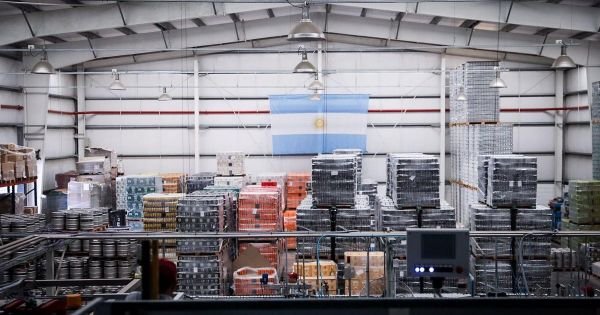SME industries plummet in Argentina
[ad_1]
SME industries plummet in Argentina
In December, 53.4% of Argentina’s SMEs reported difficulties replenishing stocks, especially in the procurement of raw materials and inputs
The Argentine Confederation of Medium-Sized Companies (CAME) released a report in Buenos Aires during the weekend saying industries from those companies had shrunk by 26.9% in December last year from the same month in 2022, amid a presidential changeover and growing uncertainties. The activity closed last year with an accumulated drop of 2.6%.
When compared to November, still under then President Alberto Fernández and Economy Minister (and losing presidential candidate) Sergio Massa, the SME industrial activity also suffered a retraction of 31.7%.
The significant depreciation of the currency, the escalation of inflation following the elections, and the changes in import regulations, which prevented purchases for some weeks, among other issues, created an environment marked by high uncertainty and a decrease in consumption, factors that hindered production levels in the manufacturing sector as a whole, CAME explained.
In addition, there were periods without quotations, with high rates of shortage of inputs, which led many companies to suspend operations for a few days or to bring forward their personnel’s vacations, the chamber added after releasing its Industrial Production Index for SMEs (IPIP) from a survey of 410 SMEs industries nationwide. In December, 53.4% of the companies reported difficulties replenishing stocks, especially in the procurement of raw materials and inputs.
The sectors faring worse off in December were Metals, machinery, equipment, and transport material with an annual drop of 35.7% in their production, at constant prices, and Wood and furniture (-34.4%).
Food and beverages fell by 15.2% annually and 21.4% month-on-month (November) at constant prices, although it bounced back 2.9% near the year’s end.
December was marked by increases in all inputs and raw materials. The companies consulted pointed out that many customers placed orders in advance in November, and that would explain the sharp monthly drop. Thus, while December was the best month of the year for this sector, for many industries it ended up being the worst, the CAME report also read.
Production in the Clothing and textile sector fell 10.2% annually at constant prices in December but grew 3.3% in 2023. In month-on-month terms, its level of activity collapsed by 20.4%, albeit with higher use of installed capacity than in previous months, because companies had intensified production in October and November amid the electoral uncertainty, and devaluation projections.
From a broader perspective, a drop in consumption and changes in import regulations resulted in many SMEs bringing forward their employees’ vacations amid shortages in inputs and the impossibility of setting sale prices.
[ad_2]
Source link




